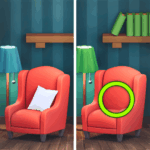Description
Simulator Facade is an innovative game that transcends traditional gaming boundaries, providing players with a unique opportunity to immerse themselves in a simulated environment that mimics the complexities of real-life interactions. This game stands out as an engaging blend of strategy, problem-solving, and social dynamics, where players must navigate a virtual world filled with intricate challenges and unpredictable outcomes.
Gameplay Mechanics
At its core, Simulator Facade employs advanced algorithms to create a responsive environment. Players take on the role of a character within a simulated household, where they interact with two virtual residents, who boast distinct personalities and emotions. The game’s primary objective is to engage effectively with these characters to influence their behavior and emotional states, which ultimately determines the outcome of the interaction.
The gameplay revolves around dialogue choices and decision-making, allowing players to manipulate various scenarios through careful conversation. The characters react dynamically to the player’s actions, creating a persistent sense of realism. This interaction is not just limited to preset responses; rather, the game’s AI allows for a vast array of responses that can change based on the player’s tone, timing, and choice of words.
Realistic Interactions
One of the most compelling features of Simulator Facade is its emphasis on realistic interpersonal communication. The game employs natural language processing, enabling players to type in commands and interact with the characters in a way that mimics genuine dialogue. This innovation allows for spontaneous and unscripted exchanges, highlighting the unpredictability of human interactions.
The characters in the game are designed to react in ways that reflect their emotional state. For example, approaching a character with aggression may lead to an outburst, whereas a calm and empathetic approach can foster a more positive engagement. This emotional depth adds layers to the gameplay, requiring players to think critically about their choices and the potential consequences.
Environment and Design
The game’s setting is carefully crafted to evoke a sense of intimacy and realism. The living room is adorned with detailed furnishings and ambient sounds that contribute to the immersive experience. Each element, from the character’s body language to the layout of the environment, is meticulously designed to create an engaging atmosphere.
The graphics, while simplistic, employ a distinct stylistic choice that enhances the simulation aspect. Rather than focusing on hyper-realism, the game opts for a more artistic approach, allowing players to engage without the distraction of overly complicated visuals.
Player Engagement
Simulator Facade challenges players to develop their emotional intelligence and adaptability. Success in the game is not merely about winning but understanding the nuances of communication. Players must be observant and responsive, adapting their strategies based on how the characters evolve throughout the interaction. This reflective gameplay provides a unique platform for self-discovery and personal growth.
Conclusion
Simulator Facade presents a groundbreaking approach to gaming, blending simulation, storytelling, and interpersonal skills in a way that resonates with players on multiple levels. By encouraging authentic communication and emotional engagement, it establishes itself as more than just a game; it becomes a valuable learning tool for navigating complex social dynamics in the real world. As players dive into this captivating experience, they will find themselves not only entertained but also challenged to think deeply about how they connect with others.




